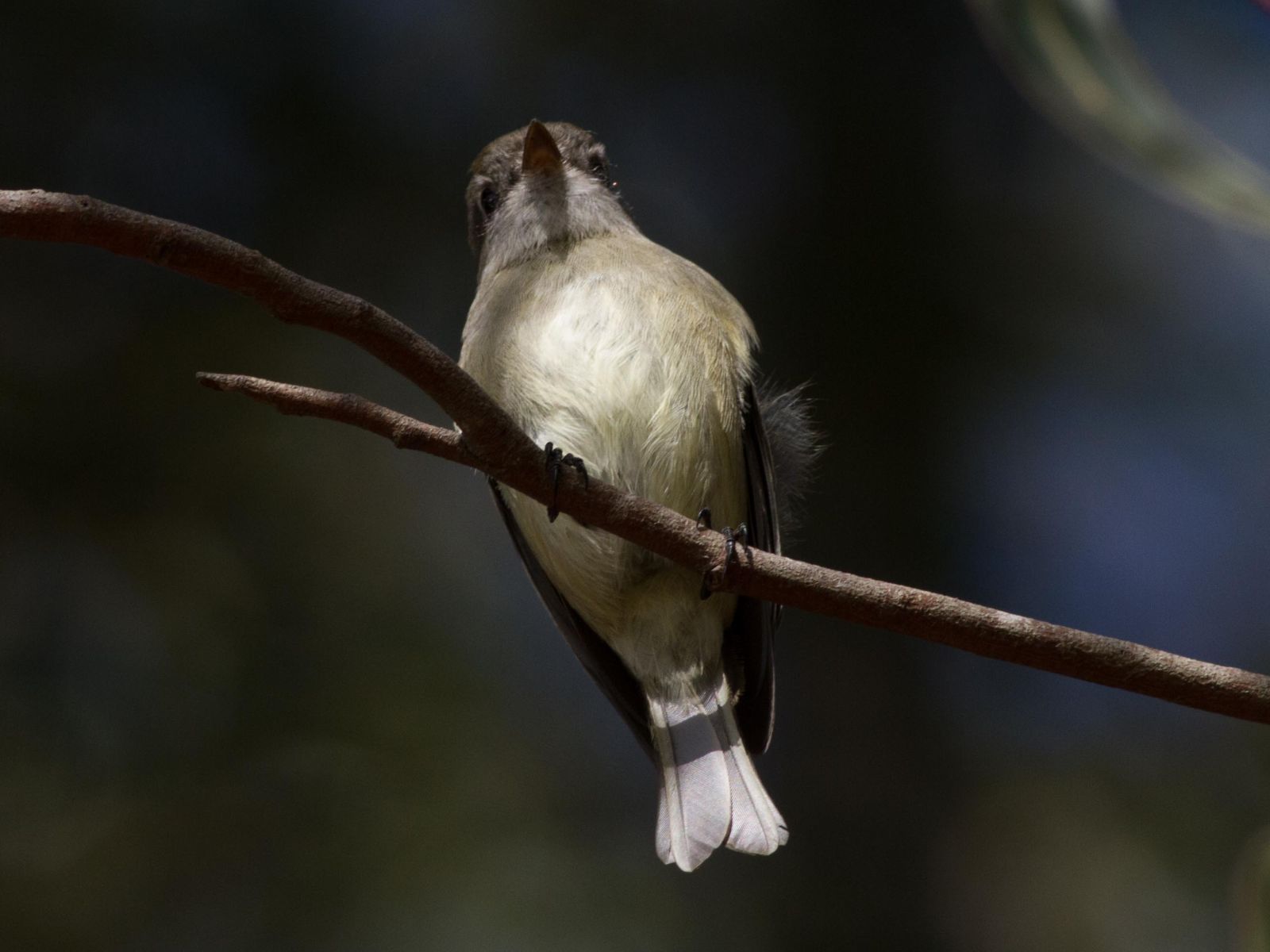[All photographs copyright, Gary Nunn 2013] – I am beginning to think video could be a great aid to teaching Empidonax identification. There is just a look-and-feel of each species in my opinion. I put together some high definition video clips of the Hammond’s Flycatcher Empidonax hammondii found by Sue Smith on 20 October 2013 at Fort Rosecrans National Cemetery, Point Loma, San Diego, California. This flycatcher was very approachable and you can hear the “flaparazzi” in the background. Yes, that noise is Matthew Binns’ Canon 1Dx shooting at a full 12.5 frames per second!
All the field marks appropriate for this species can be seen in the video including, most importantly I think; the extreme long primary extension beyond the tertials (start of the second clip, for example!), the strong yellow wash on the freshly molted plumage of the underparts, the small dark bill, and the light gray throat (tricky to see I agree, but it is actually not white). Digital photography, or videography for that matter, can be extremely helpful but lighting is a very important factor. To observe many of the subtle plumage coloration characteristics of Empidonax species avoid strong sunlight and follow a bird around into more shaded light conditions if possible. Also, obtaining truly representative images of primary extension can be frustratingly difficult. The best documentation photographs require the bird to be at camera height straight ahead of you standing with its side facing you. Photographs taken from above or below, or at an oblique angle, will be inferior and more difficult to interpret.
In addition the following still photographs show more of the field characters of this delightful small Empidonax species. Primary extension beyond the tertials is strikingly long in this species and presents a very good field mark if seen well at close enough range. Digital photography of course makes this much easier to study, but practice really helps when looking for this field mark. To photograph the flycatcher Mathew Binns let me try out his Canon 1Dx and 500 mm II lens and the first two shots below reflect this!

Hammond’s Flycatcher – Fort Rosecrans National Cemetery, Point Loma, San Diego, California 20 Oct 2013

Hammond’s Flycatcher – Fort Rosecrans National Cemetery, Point Loma, San Diego, California 20 Oct 2013


